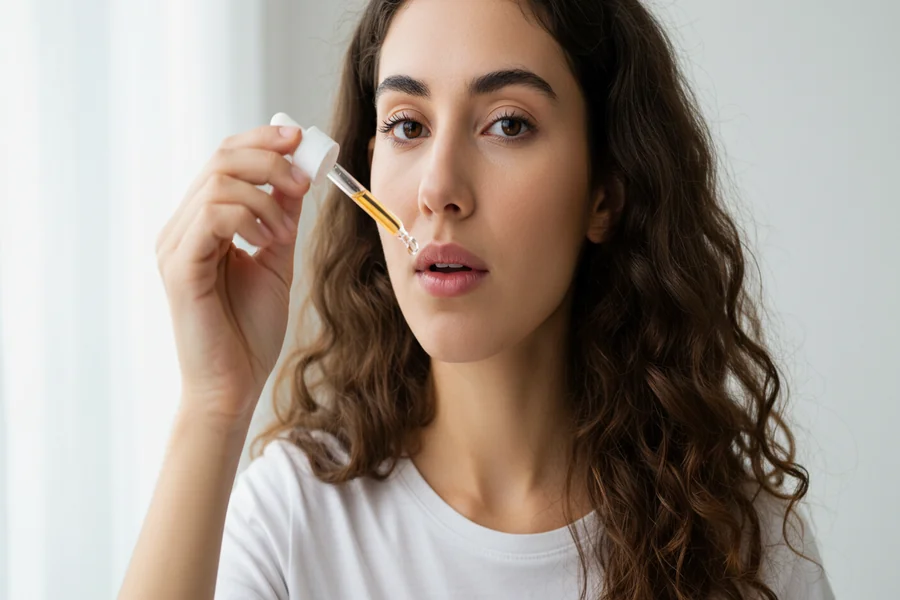Oral GLP-1 Drops: Are They Equally Effective?

If you’ve been eyeing those needle-free GLP-1 drops to manage weight or blood sugar, you might wonder whether they stand up to the good old shot. In this article, you’ll learn how drop formulations work, how they compare to injectable options, and what fits your lifestyle best.
Understand GLP-1 medications
GLP-1 receptor agonists (glucagon-like peptide-1 drugs) help you feel full, slow stomach emptying, and support healthy blood sugar control. They’ve become go-to treatments for type 2 diabetes and weight management.
Role of GLP-1 in your body
- GLP-1 is a natural hormone your gut releases after a meal
- It signals the pancreas to release insulin and tells your brain you’re satisfied
- By mimicking that action, medications can curb appetite and improve glucose levels
Types of GLP-1 delivery
- Injectable options include weekly or daily shots (for example, semaglutide or liraglutide)
- Oral forms come as pills or drops, designed for people who prefer a needle-free route
- Each option delivers the same active ingredient, but absorption and dosing can differ
Compare absorption and onset
How quickly you feel benefits can hinge on how the medication enters your bloodstream.
Once injected, GLP-1 analogues hit peak blood levels faster—usually within two hours. Drop-on-tongue versions must travel through your gut, so they peak later. That timing shift can influence how quickly you notice appetite changes or blood sugar improvements.
Evaluate effectiveness factors
Even though drops and shots share the same drug, a few factors can affect how well each option works.
Bioavailability considerations
Bioavailability is the percentage of drug that reaches your bloodstream. Injectable GLP-1 gets nearly full absorption. Oral delivery faces barriers like stomach acid, enzymes, and food interactions. Manufacturers often adjust dose or add protective coatings to boost absorption in drop formulations.
Clinical evidence summary
Direct studies comparing drop bottles to prefilled pens remain limited. Most clinical trials focus on injectable semaglutide or liraglutide. Early pharmacokinetic data shows drop formulations can achieve therapeutic blood levels if dosed properly, but head-to-head comparison trials are still emerging.
Potential side effects
Since the active molecule is the same, side effects overlap:
- Nausea or queasiness, especially when you start or increase dose
- Diarrhea or constipation as your digestive system adapts
- Occasional fatigue or headache
- Rare injection-site reactions (not an issue with drops)
You may find GI symptoms a bit milder with oral use, or you might notice them more if you take drops on a full stomach. Following your provider’s instructions can help smooth out those bumps.
Consider patient preferences
Your daily routine and comfort level matter when you weigh needle-free drops against shots.
Needle aversion
- Fear of needles can lead to skipped doses if you choose injections
- Drops eliminate puncture anxiety, which may boost your commitment
- Lower stress around dosing can improve long-term adherence
Lifestyle convenience
- Oral drops may fit better into busy mornings—no prep or disposal of sharps
- Prefilled pens offer precise dosing and fewer administration steps
- Travel can be simpler with a small dropper bottle versus refrigerated pens
Your personal taste, schedule, and comfort should guide your pick. What feels easy on day one needs to still work for you a year from now.
Improve treatment adherence
Sticking with a GLP-1 regimen is key to seeing real results. Here are tips to keep you on track.
Tips for consistency
- Link your dose to a daily habit, like brushing teeth or breakfast
- Use a reminder app or alarm on your phone
- Keep supplies visible but safely stored—no hunting in drawers
- Track symptom changes or weight shifts in a journal
Talking through concerns
Bring up any worries with your care team:
- Ask about common side effects and how to manage them
- Inquire whether you need dose adjustments based on your goals
- Discuss storage needs for pens or dropper bottles
- Clarify what to do if you miss a dose
Open dialogue keeps surprises to a minimum and builds confidence in your plan.
Discuss with your doctor
Ultimately, your healthcare provider knows your medical history and goals best. They can help match you with the dose, route, and schedule that fits you like a glove.
Key takeaways:
- Injectable GLP-1 gets into your bloodstream faster, while drops take longer to peak
- Oral formulations may require specific administration steps to boost absorption
- Side effects tend to be similar, though your experience can vary by route
- Needle aversion, convenience, and lifestyle should guide your choice
- Set up reminders, daily habits, and open talk with your provider to stay on track
Ready to explore the best GLP-1 option for you? Talk with your doctor, share this article with friends considering therapy, and drop your questions or experiences in the comments below.



